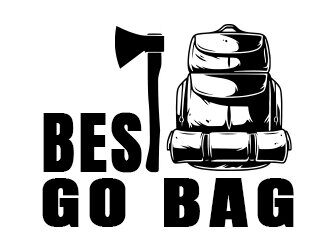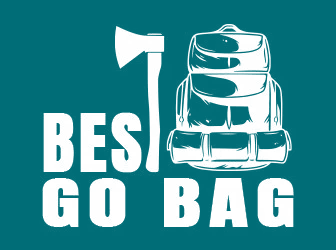You have worked hard your whole life. You’ve acquired many things you keep in your home.
Some of them probably have a high resale value. Others are meaningful to you for sentimental reasons.
The last thing you want is for a thief to break in and steal valuables you’ve accumulated through the years. In a matter of moments, they could all be gone.
Hopefully you’ve taken steps to secure your home. But it’s possible someone could still break in and rob you blind. That’s why it’s crucial to have your most valuable items hidden as well as possible.
Hide-and-seek strategy
A game I was pretty good at as a kid was hide-and-seek. Especially the hiding part. For one thing, I was small enough to fit into some spaces most kids couldn’t.
But the number one reason I was often able to avoid detection is because I learned to hide in places where the seeker would not look.
My strategy was that, whenever, possible, I’d hide in a place where I knew the seeker had already looked.
If I was hiding under a pile of clothes in a bedroom, for example, and I could hear my brother looking for me in the bathroom, I would try to sneak into the bathroom after he’d gone on to another room.
He might have found me in my original hiding place under the clothes. But he wouldn’t think to look in the bathroom again after not seeing me there. So, I’d be safe.
What’s worth hiding?
The lesson here is that if you want to increase the likelihood that an item in your home will not be found, hide it where you think they won’t look.
Among the many things you would be well off hiding are cash, jewelry, electronics and essential documents.
As well as any personal items that would mean a lot more to you than to a thief, but which might get scooped up during a heist.
Whatever it is, hide it so well that an intruder might be looking directly at the container in which it’s hidden and not even consider trying to find it there.
Kitchen capers
Here are some examples in the kitchen. Hide small items such as cash and jewelry in a can of soup. Open the can from the bottom, enjoy the soup, rinse out the can thoroughly, and put your items in it.
Replace the can bottom and place the can at the bottom of a stack of other canned goods. Even if the thief somehow ends up grabbing that can, he’ll notice the top is still on it.
Another kitchen option is putting cash in a zip-top bag and placing two pieces of Styrofoam around it. Such as what steaks are packaged in. Wrap the whole thing in aluminum foil and place it in your freezer. Now that’s some cold, hard cash.
Do you keep plants on a kitchen window sill? If so, perhaps they’d like an imaginary friend. Add a fake plant to the group and bury cash within a zip-top bag in the fake soil.
Family room foolery
Let’s move on to the family room. Picture this. Sandwich your cash or another thin valuable between two pieces of cardboard backing within a difficult-to-reach picture frame.
Even if the thief pulls the frame from the wall and looks at the back of it, he’s unlikely to rip out the cardboard to examine it further.
Select one or two of the heaviest objects in your house, such as an entertainment center or piano. Place cash in an envelope under it.
It’s unlikely a burglar will expend enough energy to try to move those huge objects.
Toys & tricks
Do you have a closet where you keep toys for grandkids to play with when they come over?
Grab a toy they never play with anymore and hide cash or jewelry in it before relegating it to the far reaches of the closet or the bottom of a toy box. Burglars can’t afford the time to look inside every toy even if they consider that possibility.
Moving to your bedroom, here’s a trick you could try. Inside a new jewelry box in a dresser drawer, put a very small amount of cash, some real-looking fake jewelry and a key.
If the thief believes he’s found your most prized possessions, he might leave before tearing your house apart looking for those types of things.
Handy hideaways
Here’s another trick. Keep a sealed envelope in a drawer near your computer marked “Bank Safe Deposit Box.” Inside the envelope will be your fake list of jewelry items, personal documents, etc.
If the thief believes all your valuables are in your bank, he might give up looking for them more quickly.
Here are a few other places you might consider for hiding small valuables:
- Inside a hollowed-out candle
- Inside a figurine
- Inside a laundry detergent box
- Inside ironing board padding
- Inside the hollow legs of an ironing board
- Inside a box marked “Christmas decorations”
- Inside an otherwise empty shampoo or hairspray bottle
- Inside a water-tight plastic bottle in a toilet tank
- Inside an envelope taped to the bottom of a cat litter box
Don’t even think about it
There’s another item I’d recommend you keep hidden. I’ll get to it in a moment. First, let’s look at where NOT to hide valuables.
- Sock drawers. Very possibly the dumbest place to hide something because it’s one of the first places they’ll look.
- Back of a wardrobe closet. Unless you live in Narnia, not a good idea.
- Inside a shoebox. Nope.
- Inside a soup can sitting on a bedroom dresser. Right item, wrong location.
- Inside a laptop. Any pride you feel at successfully opening a laptop and hiding cash in it will dissipate quickly when you realize the laptop was among the stolen items.
- Medicine cabinet, clothes pockets, briefcase and under a mattress. All bad ideas.
Downsides to disguising
There are a couple of downsides to hiding valuables in your home. Even if you have the greatest hiding place in the world, your efforts will have been wasted if you forget where you put them.
One option is to keep a list of those items and their hiding places. But be sure the list doesn’t get found.
Another problem would occur if a family member throws away your great hiding place, thinking it’s trash.
Make sure other household members know where these items are as well.
Hide survival food too
As promised, here’s that final item to hide. Something you might not think about right away when it comes to hiding valuables is food.
We’d rather have someone grab a jar of peanut butter out of our pantry than jewelry from a bedroom dresser drawer.
But if you’ve spent time and money stockpiling survival food to last anywhere from 72 hours to a year or more, you want to protect it from a thief. Make sure your survival food stash is covertly packaged.
One final thought. Don’t discuss your valuables with friends, neighbors or even family members who don’t live with you. The more people who know what you have hidden, the more likely someone will try to take something from you.


